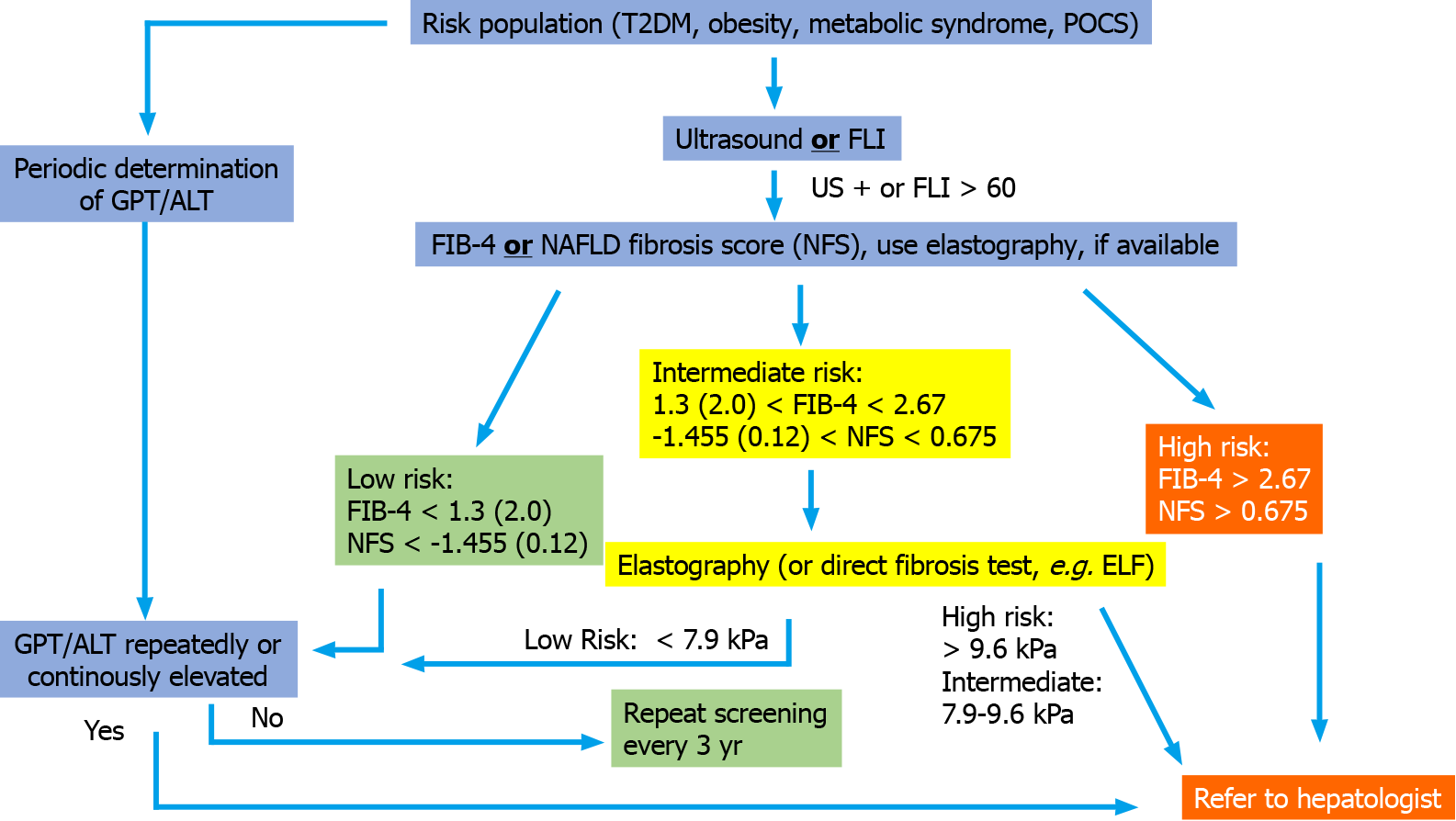Copyright
©The Author(s) 2021.
World J Gastroenterol. Sep 21, 2021; 27(35): 5803-5821
Published online Sep 21, 2021. doi: 10.3748/wjg.v27.i35.5803
Published online Sep 21, 2021. doi: 10.3748/wjg.v27.i35.5803
Figure 3 Possible screening algorithm that can be modified according to availability but contains the two main elements (detection of steatosis and fibrosis risk) and can be performed in the primary care physician’s office.
The algorithm corresponds well to the so-called European algorithm of the EASL-EASD-EASO Clinical Practice Guidelines[6] and to a recently proposed approach for family physicians and diabetologists[68] but is simpler to use. The sequences of fatty liver index and Fibrosis-4 (FIB-4) have been decisively studied for screening in a high-risk population of type 2 diabetes patients[65]. The use of age-adjusted cutoff values (in parentheses) is reasonable to reduce the high proportion of intermediate tested individuals. The sequential use of FIB-4, nonalcoholic fatty liver disease fibrosis score or enhanced liver fibrosis in the intermediate group has not been investigated in studies so far, but there are first studies on the basic sequential use of noninvasive fibrosis scores[123]. FLI: Fatty liver index; FIB-4: Fibrosis-4; T2DM: Type 2 diabetes mellitu; NFS: Nonalcoholic fatty liver disease fibrosis score; GPT: Glutamate pyruvate transaminase; ALT: Alanine aminotransferase.
- Citation: Dietrich CG, Rau M, Geier A. Screening for nonalcoholic fatty liver disease-when, who and how? World J Gastroenterol 2021; 27(35): 5803-5821
- URL: https://www.wjgnet.com/1007-9327/full/v27/i35/5803.htm
- DOI: https://dx.doi.org/10.3748/wjg.v27.i35.5803









